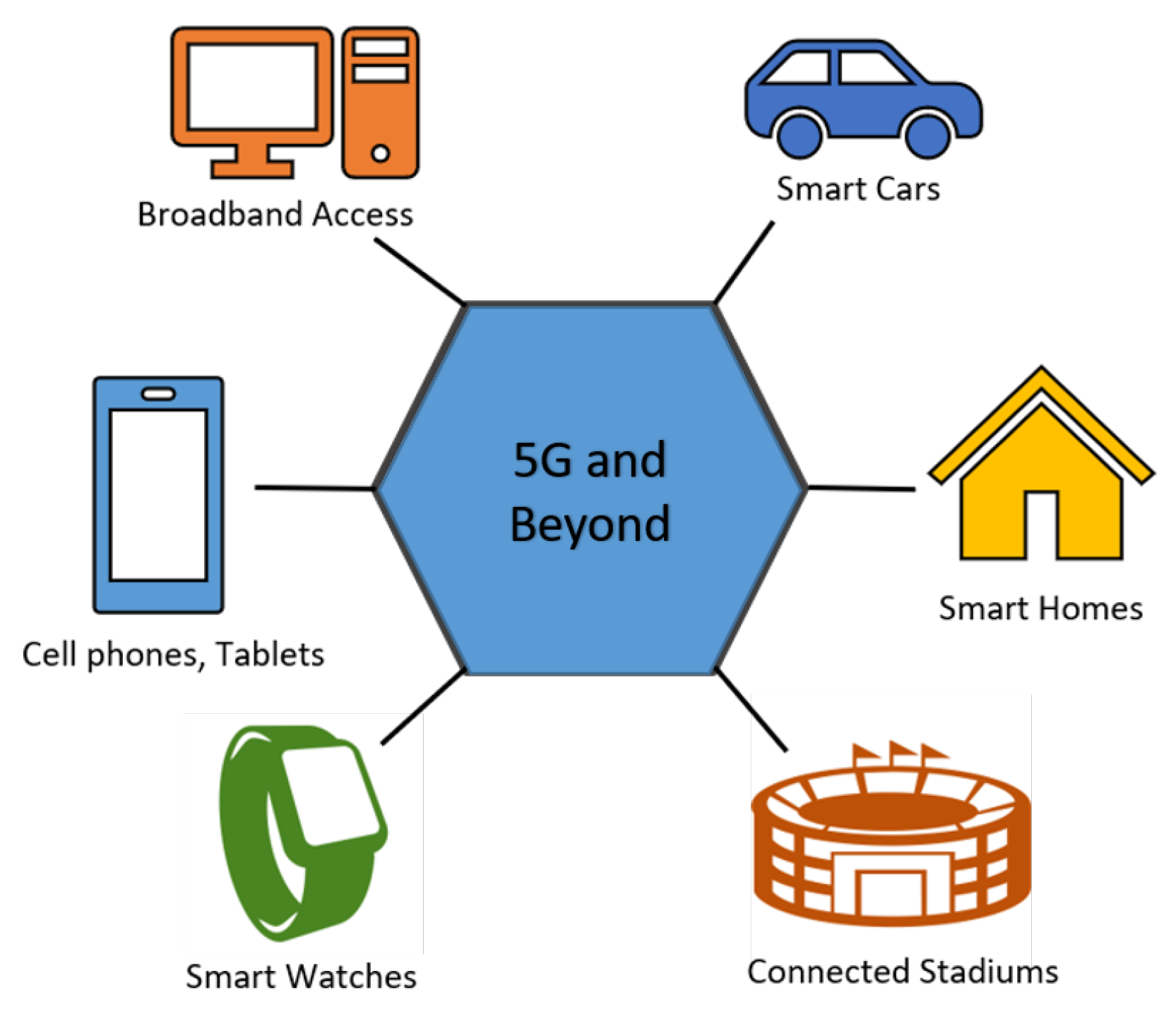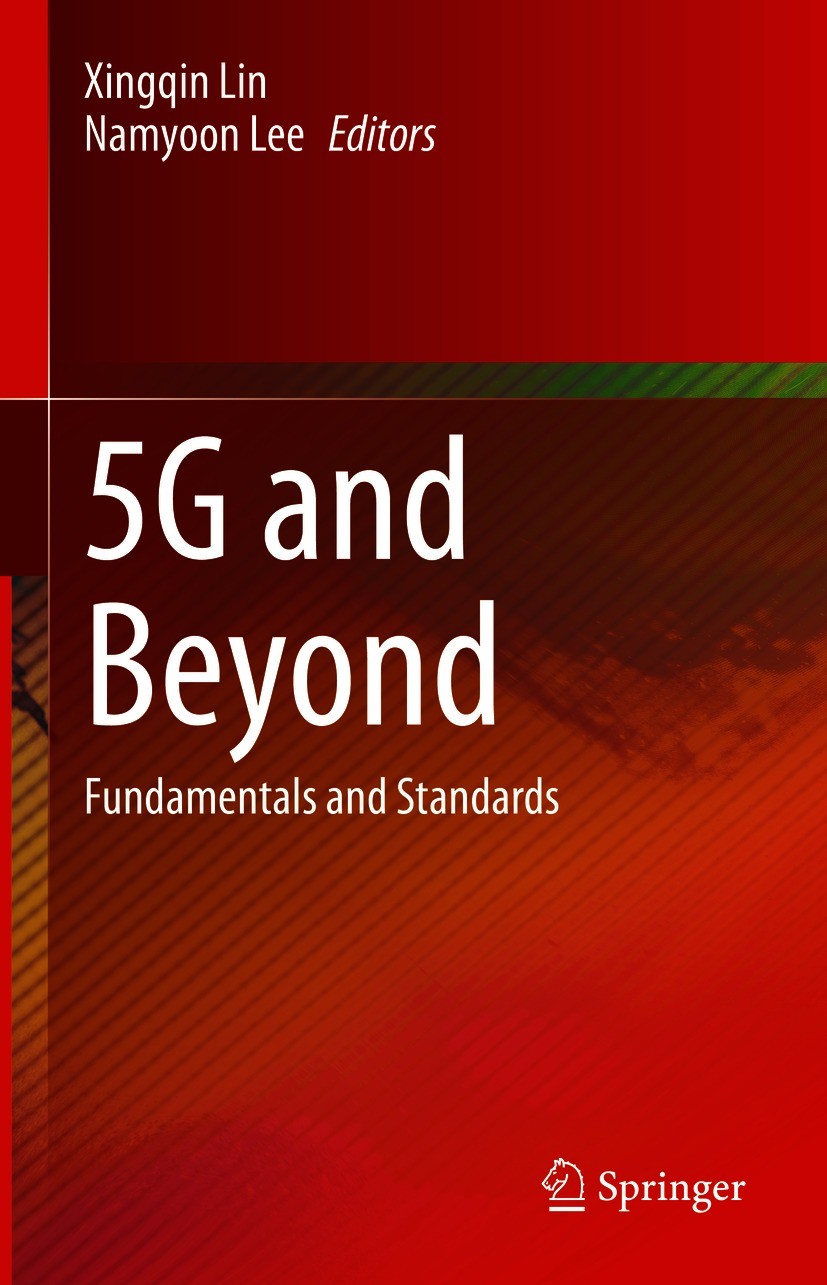5G and Beyond are the next generation of wireless technology promising faster speeds and lower latency. The development of 5G technology has paved the way for even more advanced and innovative capabilities in the future.
As we look ahead to the future of connectivity, it’s important to understand the potential impact and opportunities that 5G and beyond will bring. From enabling the Internet of Things (IoT) to revolutionizing industries like healthcare and autonomous vehicles, the possibilities are endless.
In this blog post, we will explore the evolution of 5G technology and what the future holds for wireless communication beyond 5G.

Credit: www.mdpi.com
The Dawn Of 5g
The dawn of 5G is upon us, and it’s set to revolutionize the way we connect with the world around us. With lightning-fast speeds, low latency, and massive capacity, 5G is set to unlock a whole new world of possibilities that were once thought impossible. In this article, we’ll take a closer look at the key technologies behind 5G, as well as the ways in which this new technology is set to change the face of mobile connectivity forever.
A Leap In Mobile Connectivity
5G is the next-generation mobile network that promises to deliver faster speeds, lower latency, and greater capacity than ever before. With 5G, download and upload speeds will be up to 100 times faster than 4G, enabling lightning-fast video streaming, real-time gaming, and seamless virtual reality experiences. Additionally, 5G will have a much lower latency than 4G, which means that devices will be able to communicate with each other much faster than before. This will be critical for applications like autonomous vehicles, where even a few milliseconds of delay could be the difference between a safe journey and a potentially fatal accident.
Key Technologies Behind 5g
At the heart of 5G are several key technologies that make it possible to deliver such fast speeds and low latency. One of the most important of these is millimeter-wave technology, which uses higher-frequency radio waves to transmit data. Another key technology is massive MIMO (multiple-input, multiple-output), which uses multiple antennas to transmit and receive data simultaneously. Finally, network slicing is a critical technology that allows network operators to create virtual networks within a single physical network, enabling them to allocate resources more efficiently and offer customized services to different customers.
- Millimeter-wave technology
- Massive MIMO
- Network slicing
Together, these technologies form the backbone of 5G, enabling it to deliver faster speeds, lower latency, and greater capacity than ever before. With 5G, we’re on the cusp of a new era of mobile connectivity, one that promises to unlock a whole new world of possibilities and change the way we interact with the world around us. Whether it’s streaming high-definition video on the go, playing real-time multiplayer games with friends around the world, or controlling autonomous vehicles with split-second precision, 5G is set to change everything.
5g’s Impact On Industries
5G technology is set to revolutionize various industries, bringing about significant changes and opportunities. The impact of 5G on industries is far-reaching, with advancements in connectivity, speed, and reliability. Let’s explore how 5G is transforming different sectors.
Revolutionizing Healthcare
5G is poised to revolutionize healthcare by enabling faster and more reliable communication, remote monitoring, and telemedicine. The technology facilitates real-time sharing of medical data, leading to improved patient care and better treatment outcomes. With enhanced connectivity, healthcare providers can offer telehealth services and perform remote surgeries with minimal latency.
Transforming Smart Cities
The deployment of 5G networks is transforming smart cities by enabling seamless connectivity for various devices and infrastructure. This leads to improved public safety, efficient traffic management, and enhanced energy management. With low latency and high bandwidth, smart cities can leverage 5G for real-time monitoring of utilities, transportation systems, and environmental conditions.
Innovating In Entertainment
5G is driving innovation in the entertainment industry by enabling immersive experiences and high-quality content delivery. The technology supports ultra-fast downloads and seamless streaming, enhancing user experiences for gaming, virtual reality, and augmented reality applications. With 5G, content creators can deliver rich media experiences to audiences with minimal lag and buffering.
Beyond Speed: 5g’s Broader Benefits
The advent of 5G technology has brought about a seismic shift in the way we perceive and utilize connectivity. Beyond its much-touted speed enhancements, 5G offers a plethora of broader benefits that promise to revolutionize various aspects of technology, communication, and everyday life.
Reducing Latency For Real-time Applications
5G’s ultra-low latency enables real-time applications such as remote surgery, autonomous vehicles, and augmented reality to operate with unprecedented responsiveness, creating new possibilities for numerous industries.
Enhancing Capacity And Connectivity
5G’s vast capacity and improved connectivity enable a higher density of connected devices, paving the way for the Internet of Things (IoT) to flourish and empowering smart cities, smart homes, and industrial automation.
Improving Energy Efficiency
5G’s improved energy efficiency not only reduces operational costs for network operators but also contributes to a greener, more sustainable future by minimizing the energy consumption of connected devices and infrastructure.

Credit: www.linkedin.com
Challenges On The Road To 5g
As the world eagerly awaits the arrival of 5G and beyond, there are several challenges that need to be addressed to ensure a smooth transition to this next-generation technology. These challenges encompass various aspects, including infrastructure and investment hurdles, security and privacy concerns, as well as spectrum and regulation issues. Let’s take a closer look at each of these challenges:
Infrastructure And Investment Hurdles
Building a robust and efficient infrastructure to support 5G networks is no easy task. It requires a significant investment in upgrading existing telecommunications infrastructure and deploying new equipment. The deployment of small cells, which are essential for the densification of the network, can be particularly challenging due to the need for a large number of them in urban areas. Moreover, the cost of acquiring suitable locations for cell towers and the necessary permits can also pose hurdles in the implementation of 5G networks.
Security And Privacy Concerns
As the connectivity landscape expands with 5G, security and privacy become even more critical. With an increased number of connected devices and a larger attack surface, the potential for cyber threats escalates. Network operators and service providers must prioritize the implementation of robust security measures to protect user data and ensure the integrity and confidentiality of communications. Additionally, privacy concerns arise due to the vast amount of data that will be collected and transmitted by 5G networks, requiring stringent privacy regulations and protocols to safeguard user information.
Spectrum And Regulation Issues
Effective spectrum management is crucial for the successful deployment and operation of 5G networks. The allocation and availability of suitable frequency bands, especially in densely populated areas, can be a significant challenge. Spectrum scarcity and fragmentation can result in interference and reduced network performance. Furthermore, regulatory frameworks need to be established to address issues such as spectrum licensing, pricing, and sharing arrangements to ensure fair competition and efficient spectrum utilization.
In conclusion, the road to 5G is not without obstacles. Infrastructure and investment hurdles, security and privacy concerns, as well as spectrum and regulation issues, must be carefully navigated to unlock the full potential of this transformative technology. By addressing these challenges proactively, we can pave the way for a seamless transition into the era of 5G and beyond.
Case Studies: 5g Success Stories
Smart Factories
Smart factories are leveraging 5G technology to revolutionize manufacturing processes. With ultra-fast and reliable connectivity, machines and systems can communicate in real time, leading to enhanced productivity and efficiency. Through the use of IoT sensors and AI-powered analytics, manufacturers can optimize production lines, minimize downtime, and reduce costs.
Telemedicine Breakthroughs
Telemedicine is experiencing a significant transformation with the advent of 5G. The low latency and high bandwidth of 5G networks facilitate seamless remote consultations, enabling healthcare providers to deliver real-time diagnosis and treatment. Patients in remote areas can now access high-quality medical care without the need for physical visits to healthcare facilities.
E-sports And Mobile Gaming
5G has opened up new frontiers in the realm of e-sports and mobile gaming. The low latency of 5G networks ensures lag-free gaming experiences, fostering a more immersive and competitive environment. Additionally, the high throughput of 5G networks allows for high-definition streaming and multiplayer gaming on mobile devices, catering to the growing demand for on-the-go gaming experiences.
The Next Frontier: Beyond 5g
Exploring 6g Possibilities
6G technology promises even faster speeds and lower latency than 5G.
It envisions seamless connectivity across devices and industries.
The Role Of Ai In Future Connectivity
AI plays a crucial role in optimizing network performance and efficiency.
It enhances predictive maintenance and resource allocation in networks.
Quantum Communication And Security
Quantum communication ensures ultra-secure data transmission beyond traditional encryption.
It offers unprecedented levels of security against cyber threats.
Preparing For A 5g World
In the fast-paced digital landscape, preparing for a 5G world is crucial for staying ahead. Let’s explore the key aspects that individuals, businesses, and policymakers need to focus on to thrive in the era of 5G and beyond.
Skills And Education For The Future
- Upskilling in emerging technologies like AI and IoT is vital.
- Adapting to new communication protocols is essential.
- Continuous learning will be key in the 5G era.
Business Strategies For 5g Adoption
- Investing in innovative 5G use cases for competitive advantage.
- Enhancing customer experiences through faster connectivity.
- Collaborating with telecom providers for seamless integration.
Policy And Regulatory Framework
- Establishing clear guidelines for spectrum allocation.
- Ensuring data privacy and security measures are robust.
- Promoting fair competition among industry players.

Credit: link.springer.com
The Societal Shift: 5g As A Catalyst For Change
The Societal Shift: 5G as a Catalyst for Change
Bridging Digital Divides
5G technology is revolutionizing connectivity, bridging gaps in access to information.
Enhances internet speed, ensuring rural areas access to digital resources.
Fostering Global Collaboration
5G enables seamless communication, connecting individuals worldwide instantly.
Facilitates real-time interactions, promoting cross-border partnerships.
Driving Sustainable Development
5G empowers IoT devices, optimizing resource usage for environmental sustainability.
Enhances smart city initiatives, reducing energy consumption and carbon footprint.
Frequently Asked Questions
What Is 5g Technology And How Does It Work?
5G technology is the latest generation of wireless communication that promises faster speeds, lower latency, and greater capacity. It works by utilizing higher frequency bands, advanced antennas, and sophisticated network infrastructure to transmit data at incredible speeds, enabling a wide range of applications including autonomous vehicles, IoT devices, and virtual reality.
What Are The Benefits Of 5g Technology?
5G technology offers numerous benefits, such as ultra-fast download and upload speeds, reduced latency for real-time applications, increased network capacity to handle more devices, and improved reliability. It also enables the development of advanced technologies like autonomous driving, remote surgeries, and smart cities, revolutionizing various industries and enhancing our daily lives.
How Does 5g Differ From Previous Generations Of Wireless Technology?
Unlike previous generations, 5G technology operates on a higher frequency band, which allows for faster data transfer rates. It also incorporates advanced technologies like beamforming and massive MIMO, enabling better coverage and capacity. Additionally, 5G offers lower latency and greater reliability, making it ideal for applications that require real-time responsiveness and high data throughput.
Will 5g Replace 4g Entirely?
While 5G is set to become the new standard in wireless communication, it is unlikely to entirely replace 4G. 4G will continue to coexist with 5G for the foreseeable future, as it still provides reliable connectivity and supports a wide range of devices.
However, as 5G infrastructure expands and more devices become compatible, 4G networks may gradually be phased out in certain areas or for specific use cases.
Conclusion
As we move towards the future, 5G technology is just the beginning. The advancements in technology are rapidly changing our lives and the way we communicate. With the potential of 5G and beyond, we can expect to see even more innovation, connectivity, and efficiency.
As industries continue to adapt to this new technology, it’s important to stay informed and be prepared for what’s to come. The future is exciting, and we can’t wait to see what’s in store for us.

